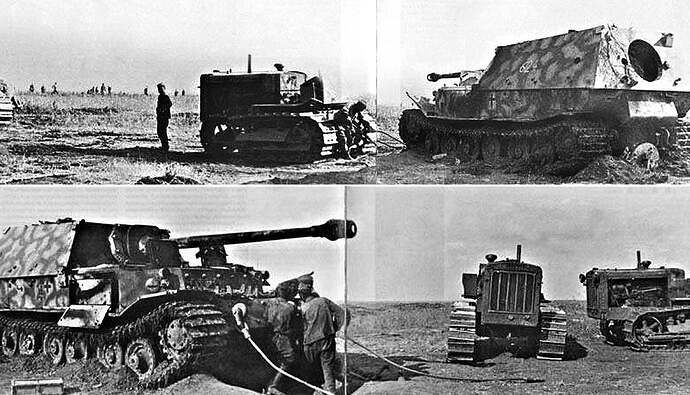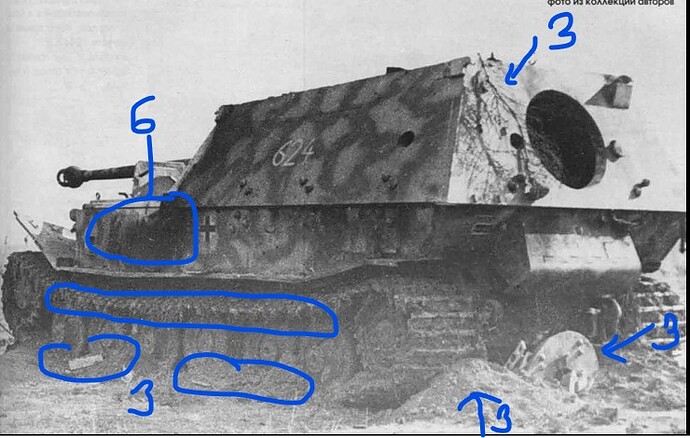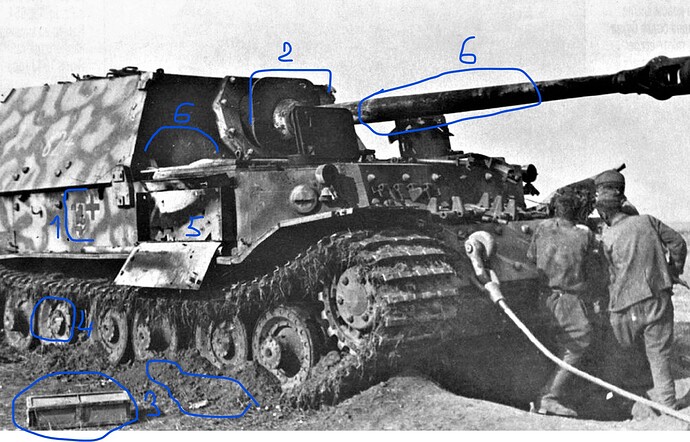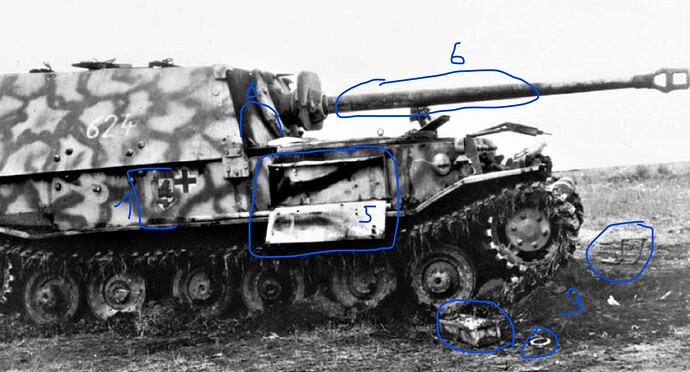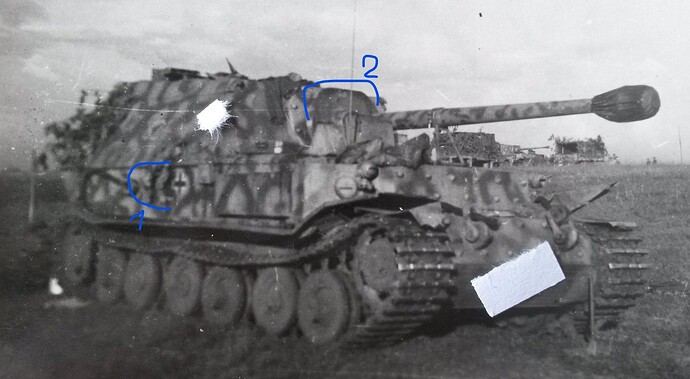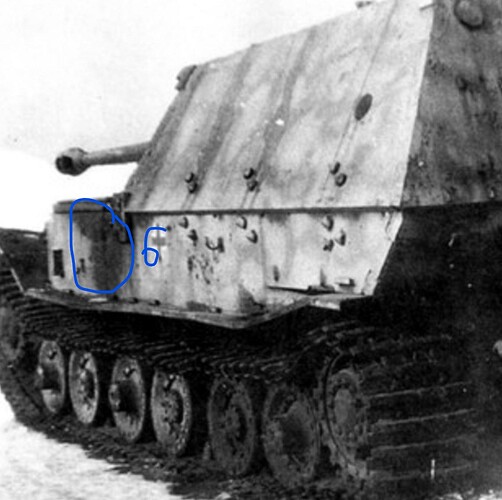First I apologize for my English, I hope the text will be understandable
I am concerned with the maximum accuracy of the model according to the photo, but I have a few questions.
This particular type is fairly well documented, there are photos from when it was in German hands, as well as several photos of the abandoned machine being towed away by the Russian army and photos from an exhibition in Moscow.
Questions about camouflage
- Right side of the vehicle - next to the cross, there is a sign on the side of the vehicle, but I am unable to identify what it could be. I can think of a repainted old symbol, but no other machine from Pz.Abt. 654 has nothing similar. Another possibility is something that was field mounted here, but it looks flat, just like it’s in color…but what colors?
- The gun cover - looks darker than the yellow base on the rest of the vehicle, is it possible that the shield could stay in the base red color like on the Nr. 501 machine?
Questions about damage - I will write my opinion / theory and I will be happy for a comment or correction, other ideas
3) Sources differ on how the machine was damaged.
My opinion is that the stand has fallen into place - the tracks show that they have rotated in place, the machine is obviously sitting on its “belly”. I would rule out mine damage, the tracks are not damaged.
My theory: The crew left the machine, but did not destroy it (I would rule out a fire in the fighting space, the superstucture is not burnt anywhere. The rear hatch is unscrewed and thrown to the ground - probably during the evacuation of the crew?
The machine stood on the spot for a long time, on the order of several weeks, before the Russians towed it away - the branch in the back part is completely devoid of leaves.
The machine is “stolen and scrapped” - simply everything that could be taken away and would be useful for something is gone, next to the machine lies a discarded radio station and radio operator’s / driver’s seat, light cover. I assume the batteries (which are under the radio operator’s seat) were also taken.
4) Right section - there is visible damage to the wheel, which was later removed during towing - I assume some smaller caliber that just destroyed the cover and damaged the bearings.
5) I identified several minor punctures on the tool box on the left side, there is some smoke visible - I assume the shovel handle was on fire.
6) Smoke on the left side against the coolers - I assume a hit that didn’t go through + a hit from Molotov - it’s smoked here, the smoke extends to the upper part of the superstructure.
In other photos, the gun itself and the frontal armor look charred - the green pattern, which is quite visible on a functional machine, is no longer visible. I assume there was a Molotov hit, but is it possible that only the exterior parts would burn without the interior of the engine compartment?
Why am I solving it like that, I will have an exposed radiator area and I am also solving the entire interior and I am thinking about what kind of damage to do here to make it as faithful as possible.
Does anyone have any more detailed information on the actual damage to this machine please?
Thanks to all!
